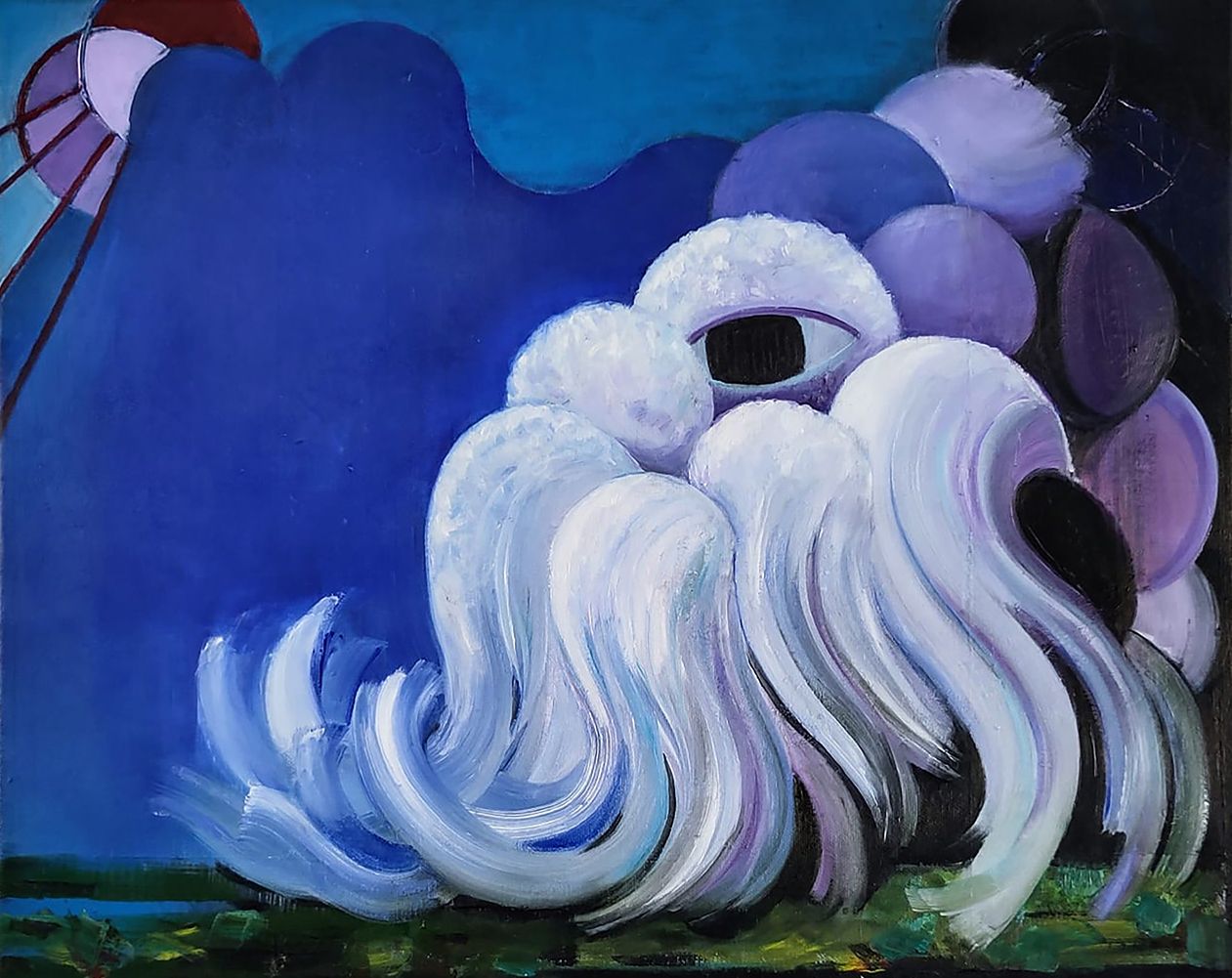02 march 2025, Yves Joris
Where clouds whisper and smoke vanishes
Somewhere between looking and understanding lies an elusive space, a place where images emerge without becoming fully graspable, where a landscape transforms into a feeling, a memory, a suggestion. Artists often navigate this twilight zone between what we think we see and what is truly there. Yasmine Willems (b. 1985 in Lier, lives and works in Zeeland, NL) explores this space in her exhibition 'Pareidolia' in Shoobil Gallery with a subtle yet immersive intensity. Her paintings are not landscapes in the classical sense, but images in which perception and imagination merge. Her work does not evoke loud emotions, but a contemplative wonder — like looking at something unfolding just beyond your field of vision, a scene that can be felt but never fully revealed.
Smoke rising from the landscape
Anyone standing before a work by Yasmine Willems in the new exhibition at Shoobil Gallery will quickly realise that her images are not immediately comprehensible. They demand attention, urging the viewer to slowly unravel what is happening on the canvas. In "Pareidolia", the title piece of the exhibition, a plume of smoke rises, detaching itself from the ground and weaving through the air like a living entity. Its source remains unseen, lending it a sense of mystery.
The landscape does not exude idyllic tranquillity, but vibrates with movement and change. Willems’ polder landscapes are not realistic, but represent the transformation of an inner experience: a row of trees on the left acts as a stage curtain, a boundary behind which imagination takes free rein. There is no horizon and the space is open, undefined. The contrast between the dark earth and bright sky emphasises the tension between the concrete and the intangible.

Yasmine Willems, Pareidolia, 2024, Shoobil
'Pareidolia' refers to the human ability to recognise patterns in random forms—faces in clouds, figures in shadows. We all experience it: a man in the moon, a dragon in drifting clouds. Artists have played with this phenomenon for centuries, from Leonardo da Vinci, who encouraged his students to discover stories in stains and marks, to the Surrealists, who used chance to expose the subconscious. Willems brings this tradition into the present, making it personal. Her paintings invite us to seek and discover meaning for ourselves. She does not offer ready-made answers, but creates an atmosphere in which the mind is free to wander.
Her work also echoes artists like J.M.W. Turner and Claude Lorrain. Turner, with his dramatic light and misty atmospheres, understood how smoke and fog could transform a landscape and charge it with an almost metaphysical tension. Lorrain, on the other hand, created landscapes in which light not only set the mood, but also opened up an emotional space. Willems combines these traditions and brings them into the contemporary era: her smoke is not a grandiose natural phenomenon but a whispering presence, her light not a classic sunset but a suggestion of something shifting between reality and dream.

Yasmine Willems, The night will come anyway, 2024, Shoobil
The power of paint and time
Willems works with both acrylics and oils, layering them meticulously. This process requires time and patience—each layer must dry before the next is applied, allowing the colours to develop a deep, rich texture. At first glance, her palette is dominated by blue—vivid, glowing, almost vibrating—but on closer inspection, subtle shades of green, grey, black and white emerge. This is not a painting that immediately reveals itself, but a process for both artist and viewer.
Her paintings do not come into being in a single spontaneous gesture. They are not the result of a sweeping brushstroke crossing the canvas in one motion, but rather a delicate interplay of thoughtful choices and serendipitous moments. Willems builds her works from a dark base layer, allowing the colours to emerge from the depths. This technique gives her paintings an almost luminous quality, as if another reality is quietly lingering beneath the surface. In her approach, Willems is as much a builder as a painter — layer by layer, constructing an entire world, each brushstroke a step further towards discovering what the painting itself wants to become.

Pareidolia, Shoobil Gallery
What we think we see
There is an almost meditative quality to the paintings in this series. The movement of smoke, the indistinct cloud formations, the soft mists hovering over the landscape—everything floats within a silent, immersive atmosphere. The work recalls the Romantic tradition and its fascination with the sublime, but without dramatic pathos. No storms or overwhelming natural forces here, only a subtle interplay between light and space.
It is up to the viewer to give meaning to what is seen. Is the smoke a sign of life or an echo of something lost? Is the polder a safe haven or deserted expanse? These questions linger without resolution. The depth of Willems’ work lies not only in its figurative elements, but also in the way she invites us to take our time—to truly look, to let the paint speak, to allow space for what is not immediately visible.
Yasmine Willems’ paintings encourage attentive observation, a slow immersion in forms and colours that do not readily reveal themselves. Her work builds on a tradition in which light and atmosphere carry as much meaning as the subject itself. In her "Pareidolia" series, everything seems in motion, as if the landscape itself is breathing, resisting a singular interpretation. The smoke dissipates into the sky, the horizon fades into a mist of possibilities. This is art that does not demand fast conclusions, but invites presence — the willingness to wander in a world that reshapes itself with every gaze. Willems does not just paint a landscape, but a way of seeing — and therein lies the true power of her art.

Yasmine Willems, Clear sky, 2024, Shoobil
